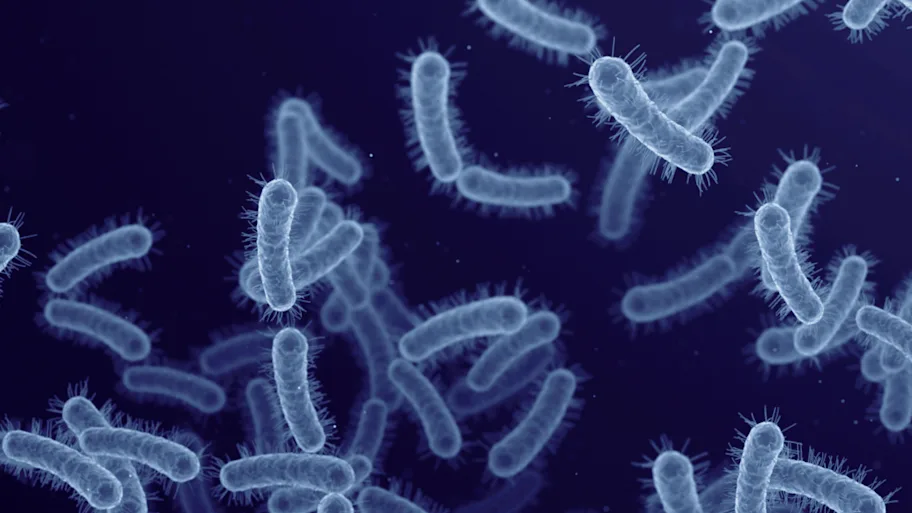
- Science News
- Health
- ‘We cannot change the human body, but we can change the environment’
‘We cannot change the human body, but we can change the environment’
by Liad Hollender, Frontiers science writer

Dr Barbara Natterson-Horowitz (a cardiologist) and Prof Daniel Blumstein (a behavioral ecologist) were faculty members at the Los Angeles campus of the University of California for decades before they met. Since their serendipitous encounter in the mid-2000s at a lecture on evolution, the two have become prolific scientific collaborators. They are leading researchers in the emerging field of evolutionary medicine, which applies insights from ecology and evolution to drive biomedical innovation and public health reform.
Their most recent article, published in Frontiers in Science, brings together diverse experts to chart a research agenda of staggering scope. Their aim is to tackle major health challenges by applying an evolutionary perspective to everything from antibiotic resistance and drug-resistant cancers to obesity, diabetes, and other ‘modern’ diseases. We met with them to learn more about this disruptive field.
Evolution and medicine seem like very distinct disciplines. How are they related?
Barbara: There is a famous saying – ‘Nothing in biology makes sense except in the light of evolution’ by Theodosius Dobzhansky. But what is medicine if not the biology of the human body and mind? Viewing health through the lens of evolutionary biology helps explain why we get sick and can inspire new ways of preventing and treating disease.
Dan: This lens is simple at some level, because it’s based on a simple idea – natural selection. But it has wide applicability since it acts on all living organisms – those that have very rapid life cycles, like bacteria, or very slow life cycles, like elephants or whales.
How did the evolutionary perspective first enter medicine?
Dan: It was thanks to the work of Nesse and Williams – a leading evolutionary biologist and a physician. In the early 1990s, they wrote an article introducing the idea that an evolutionary perspective can explain many aspects of disease. When I came across it, I thought it made perfect sense and was surprised people weren’t jumping on this new way of thinking. Their views eventually gained traction and the field has been growing ever since.
How did you become interested in evolutionary medicine?
Barbara: In the mid-2000s, I consulted the Los Angeles Zoo on cardiovascular problems in great apes. This made me want to learn more about evolutionary biology – and to my surprise, all I had to do was to walk a few hundred yards north of my office where a lecture was taking place. I met Dan there, and we quickly realized we had a common interest in evolution and medicine. I consider this as one of the most important moments of my professional life.
Can you give an example where evolutionary principles have influenced medicine?
Barbara: One of the biggest success stories is public awareness of antimicrobial resistance. Bacteria and other microbes naturally evolve adaptations to get around chemicals that kill them, effectively creating drug-resistant variants. For decades, we’ve fought drug resistance by throwing more and more antimicrobials at these variants. But they just develop more and more workarounds.
At this point, however, physicians are more cautious about prescribing antimicrobial medications – especially the broad-spectrum kind that affects a large range of microbes. I believe this new public and political agenda is driven by an understanding of the evolutionary processes that caused the problem in the first place.
Dan: Some countries also went after agricultural antibiotics. Cows and chickens regularly receive antibiotics just because they make them grow fatter faster, not to treat anything. This practice breeds resistant microbes that threaten us all. But these successes are only in some places, which is worrying since resistant variants can move around quickly.
How can we prevent the emergence of drug resistance?
Dan: Evolutionary principles can help guide us. Andrew Read, who is a co-author of this article, is likely to win a Nobel prize if he’s right (and he might be!) about changing the way we take antimicrobials. He argues against the current practice of taking these drugs for extended periods, and instead proposes new, adaptive approaches that won’t drive the evolution of resistance.
How can biodiversity inspire new biomedical therapies?
Barbara: I think that physicians like me – before I had my epiphany – think of nature as the wild and the intensive care unit (ICU) as the pinnacle of human technology. But the biodiversity of the natural world could be an extraordinarily powerful source of insights that can inform biomedical innovation.
For example, hyenas and vultures live on carrion, which is rotten meat. If we understood the mechanism that prevents them from getting sick, we could use this knowledge to keep food safer for humans. Also, giraffes have the highest blood pressure of any animal – over twice the normal pressure for humans – but don’t suffer from organ damage and other effects of hypertension like we do. What is the biology that protects these animals?
On the other side of the coin are our similarities. Since other animals suffer from the same diseases as humans, monitoring the health of wild animals can alert us to potential dangers. For example, researchers followed a group of beluga whales in the St. Lawrence estuary in Canada for 17 years and discovered that many of them had breast and ovary cancer. This observation alerted the region to the carcinogenic chemicals being released by aluminum smelting facilities into the water.
How can we learn about the health of wild animals?
Dan: Barbara and I perform many literature-based studies, looking for and collecting potential susceptibility or resistance mechanisms. But they are all data deficient because there is insufficient investment in this field. The National Institute of Health in the United States, for example, favors projects that fit within the ‘bench-to-bedside' model over exploratory research projects. But given the enormous potential benefit, I would argue that funding agencies should be a little more Darwinian – try to understand variation by systematically looking for new mechanisms in nature.
How can evolution explain the rise in ‘modern’ health problems such as heart disease, early-onset cancers, and low fertility?
Barbara: Organisms evolve in a way that is optimized for the environment – to maximize survival and reproduction. But the environment our ancestors evolved in is very different from today’s world. And this mismatch causes disease. For example, our ability to store energy as fat was useful in the past when high-calorie food was difficult to obtain. But in societies where food is now plentiful, this causes major health problems like obesity, type 2 diabetes, and cardiovascular disease.
How can we resolve the mismatch between our genes and our environment?
Barbara: We cannot change the human body, but we can change the environment. If a disease is caused by mismatch, then health can be the result of a realignment between the environment and biology.
Dan: To know how and when to act, we need to understand why our bodies react the way they do. Peter Gluckman, another co-author of this article, was New Zealand’s science advisor for many years, where he advocated for evidence-based public health measures. But this requires dedicating more funding and expanding the biomedical research enterprise.
REPUBLISHING GUIDELINES: Open access and sharing research is part of Frontiers’ mission. Unless otherwise noted, you can republish articles posted in the Frontiers news site — as long as you include a link back to the original research. Selling the articles is not allowed.






